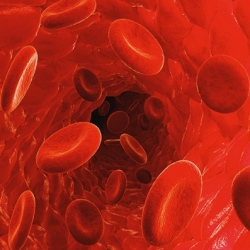
A series of nanorobots created by Soutik Betal during his doctoral research in Electrical Engineering under the guidance of professors Ruyan Guo and Amar S. Bhalla in the UTSA Department of Electrical and Computer Engineering, could one day lead to huge medical advancements.
Guo explains, “In a nutshell, we have developed nanocomposite particles that can be remotely controlled by an electromagnetic field. They function like extremely tiny robots that interact with biological cells.”
The nanocomposites are made of two different types of multifunctional oxide materials in a “core and shell” configuration. The core is magnetic. It changes ‘shape’ in response to magnetic fields. The shell is ferroelectric. It converts pressure into electric potentials.
The magneto-elasto-electric coupled effect in the nanocomposites act as arms and legs that move the nanoparticle around to interact with targeted biological cells. The nanorobots can move cells to align with one another, push cells into different locations and possibly be used to deliver medication into a cell.
The experimental demonstration of the remotely controlled medical robot was performed in late 2016 by Betal, who was conducting his doctoral dissertation research in Guo and Bhalla’s Multifunctional Electronics Materials and Devices Research Laboratory (MeMDRL). While the fabrication of core-shell structured materials have been developed through international research exchanges with collaborators in Brazil, the team discovered and Betal demonstrated the nanocomposites produced permeable motion.
“We were intrigued and initially puzzled at the fact that nanoparticles larger than the opening of a cell membrane’s channels could actually enter inside,” said Guo.
